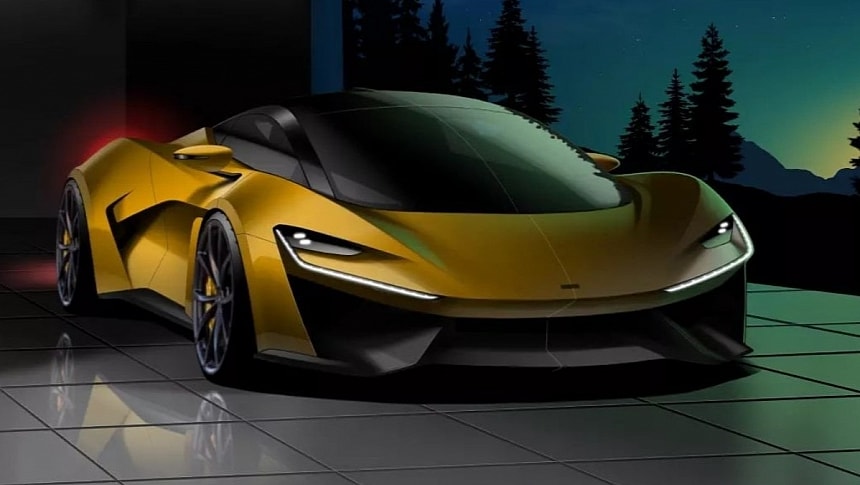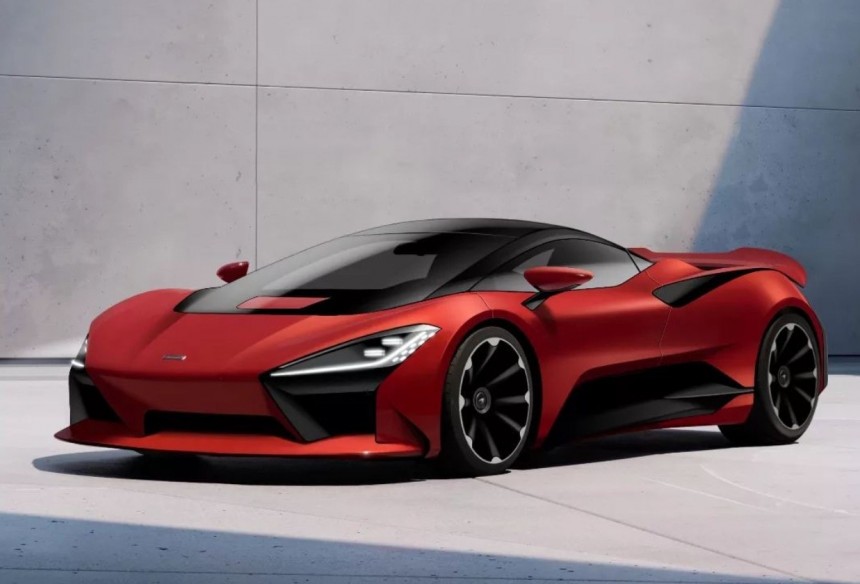As you're well aware, Ferrari will debut its first-ever production battery-electric vehicle in 2025 for model year 2026. Rival automaker McLaren Automotive wants in on the action as well, with chief executive Michael Leiters offering a status update to Autocar on the sidelines of the SMMT International Automotive Summit 2024.
Before Macca's electric thriller shows up, Leiters called for substantial investments into the domestic automotive supply chain. Low-volume manufacturers such as McLaren Automotive have it particularly hard, with Leiters confirming that his company is currently looking for a high-voltage battery from supplies that can fulfill the rules of origin requirements to avoid tariffs.
Said battery is for a plug-in hybrid, although the big kahuna didn't say which one. However, we do know that Ricardo and McLaren are developing an electrified V8 powertrain for the automaker's next-generation product lineup. Reading between the lines, the successor of the 750S will get said plug-in hybrid twin-turbocharged V8 setup.
We also know that McLaren uses lithium-ion batteries from BMW in the Artura, which packs a 120-degree sixer with – of course – two snails for extra oomph. BMW and McLaren go a long way back, with the Gordon Murray-designed F1 being the best example in this regard. McLaren is also considering BMW underpinnings for its first-ever sport utility vehicle, with the prime candidate being the CLAR platform of every rear-biased model from the 3er all the way to the XM.
Speaking to Autocar, the chief executive officer made it clear that McLaren Automotive has started "an engineering program" to define its first electric vehicle. In other words, the Woking-based company's first electric vehicle isn't going to happen anytime soon. Other than government investment in the domestic automotive industry, McLaren isn't happy with the current electric vehicle high-voltage battery tech due to Macca's high performance and dynamic targets.
"It's not a supercar if it weighs two tons and has 2,000 horsepower," added Leiters, and he's completely right. Outright power doesn't mean a thing if the vehicle in question weighs over two tons, which means 4,409 pounds. The man in charge of McLaren wants the e-supercar to be "nimble on the street" and to have "that perfect McLaren feeling," referring to a power-to-weight ratio, chassis fine-tuning, suspension tech, and aero that would make Ferrari break a sweat.
Citing skill requirements, foreign production of the much-anticipated electric supercar isn't considered. That's a stark contrast from the BMW Group and Mercedes-Benz AG. In the former's case, Neue Klasse electric vehicles will be produced in countries outside of Germany. As for Merc, the G 580 with EQ Technology is assembled in Austria by a contract manufacturer rather than Germany by Mercedes-Benz AG.
Considering that BMW and Mercedes sell quite a bit more vehicles that cater to completely different customers from those of McLaren, it's hardly surprising that Macca wants to keep this fellow domestic. On that note, Leiters expects 90 percent of worldwide sales to be hybrids in the next three to five years. That's by 2030, meaning that the McLaren 750S will be replaced by then.
Ferrari already makes a twin-turbo V8 plug-in hybrid in the form of the SF90 series, which is topped by the limited-run XX special edition. The 4.0-liter engine works together with three electric motors to deliver 1,016 horsepower and quite a bit of torque. Dry weight is 1,560 kilograms (3,439 pounds), therefore resulting in pretty impressive power-to-weight ratio. However, the unassisted McLaren Senna is eight ponies per ton better.
Said battery is for a plug-in hybrid, although the big kahuna didn't say which one. However, we do know that Ricardo and McLaren are developing an electrified V8 powertrain for the automaker's next-generation product lineup. Reading between the lines, the successor of the 750S will get said plug-in hybrid twin-turbocharged V8 setup.
We also know that McLaren uses lithium-ion batteries from BMW in the Artura, which packs a 120-degree sixer with – of course – two snails for extra oomph. BMW and McLaren go a long way back, with the Gordon Murray-designed F1 being the best example in this regard. McLaren is also considering BMW underpinnings for its first-ever sport utility vehicle, with the prime candidate being the CLAR platform of every rear-biased model from the 3er all the way to the XM.
Speaking to Autocar, the chief executive officer made it clear that McLaren Automotive has started "an engineering program" to define its first electric vehicle. In other words, the Woking-based company's first electric vehicle isn't going to happen anytime soon. Other than government investment in the domestic automotive industry, McLaren isn't happy with the current electric vehicle high-voltage battery tech due to Macca's high performance and dynamic targets.
Citing skill requirements, foreign production of the much-anticipated electric supercar isn't considered. That's a stark contrast from the BMW Group and Mercedes-Benz AG. In the former's case, Neue Klasse electric vehicles will be produced in countries outside of Germany. As for Merc, the G 580 with EQ Technology is assembled in Austria by a contract manufacturer rather than Germany by Mercedes-Benz AG.
Considering that BMW and Mercedes sell quite a bit more vehicles that cater to completely different customers from those of McLaren, it's hardly surprising that Macca wants to keep this fellow domestic. On that note, Leiters expects 90 percent of worldwide sales to be hybrids in the next three to five years. That's by 2030, meaning that the McLaren 750S will be replaced by then.
Ferrari already makes a twin-turbo V8 plug-in hybrid in the form of the SF90 series, which is topped by the limited-run XX special edition. The 4.0-liter engine works together with three electric motors to deliver 1,016 horsepower and quite a bit of torque. Dry weight is 1,560 kilograms (3,439 pounds), therefore resulting in pretty impressive power-to-weight ratio. However, the unassisted McLaren Senna is eight ponies per ton better.























